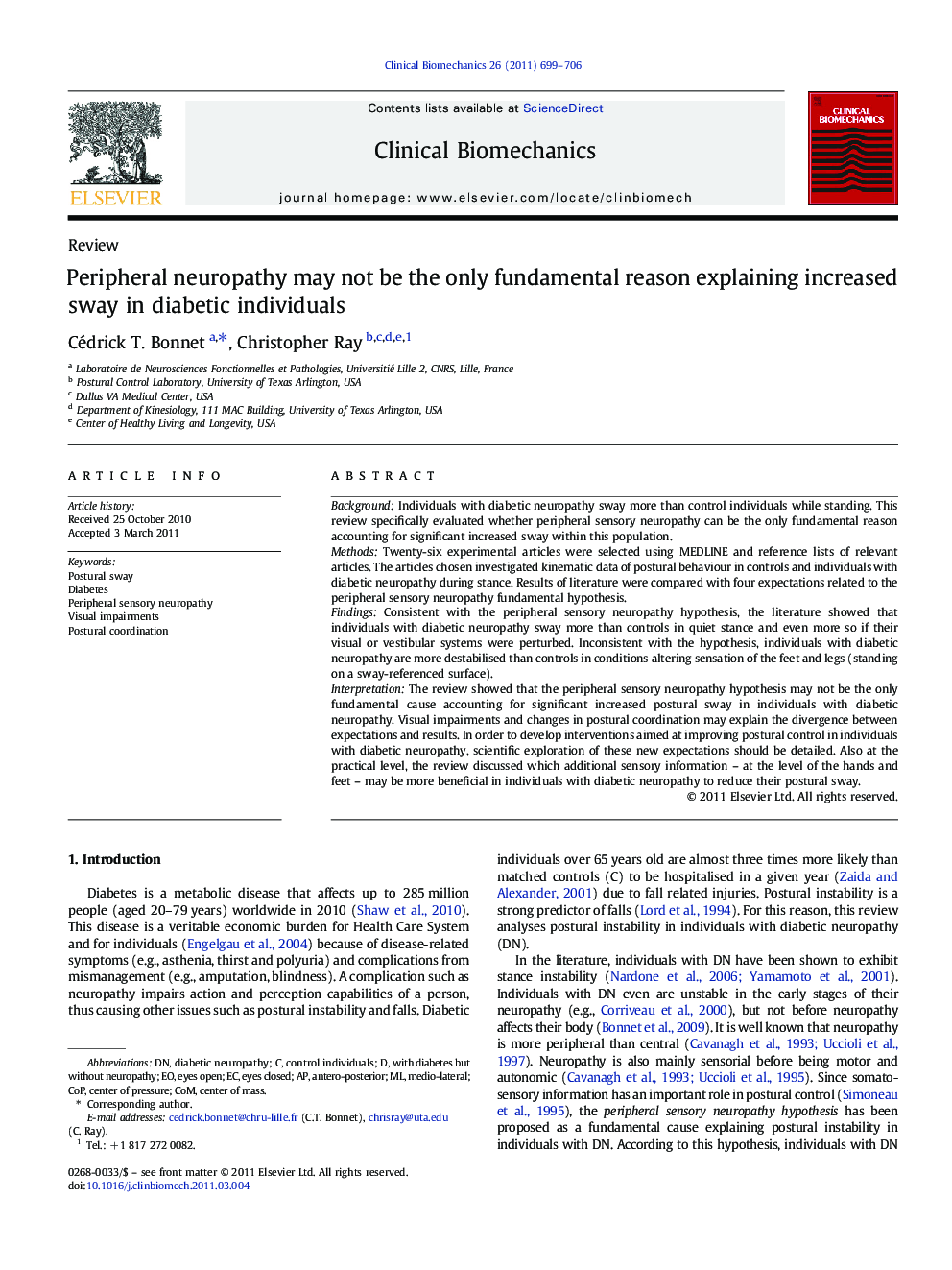| Article ID | Journal | Published Year | Pages | File Type |
|---|---|---|---|---|
| 4050715 | Clinical Biomechanics | 2011 | 8 Pages |
BackgroundIndividuals with diabetic neuropathy sway more than control individuals while standing. This review specifically evaluated whether peripheral sensory neuropathy can be the only fundamental reason accounting for significant increased sway within this population.MethodsTwenty-six experimental articles were selected using MEDLINE and reference lists of relevant articles. The articles chosen investigated kinematic data of postural behaviour in controls and individuals with diabetic neuropathy during stance. Results of literature were compared with four expectations related to the peripheral sensory neuropathy fundamental hypothesis.FindingsConsistent with the peripheral sensory neuropathy hypothesis, the literature showed that individuals with diabetic neuropathy sway more than controls in quiet stance and even more so if their visual or vestibular systems were perturbed. Inconsistent with the hypothesis, individuals with diabetic neuropathy are more destabilised than controls in conditions altering sensation of the feet and legs (standing on a sway-referenced surface).InterpretationThe review showed that the peripheral sensory neuropathy hypothesis may not be the only fundamental cause accounting for significant increased postural sway in individuals with diabetic neuropathy. Visual impairments and changes in postural coordination may explain the divergence between expectations and results. In order to develop interventions aimed at improving postural control in individuals with diabetic neuropathy, scientific exploration of these new expectations should be detailed. Also at the practical level, the review discussed which additional sensory information – at the level of the hands and feet – may be more beneficial in individuals with diabetic neuropathy to reduce their postural sway.
